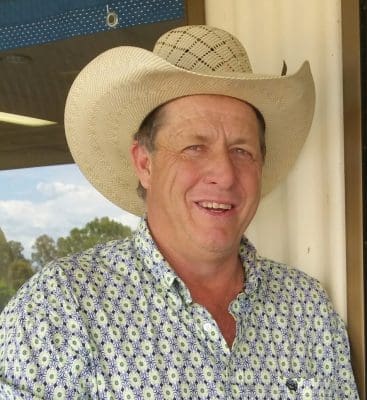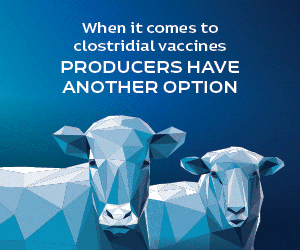
As the commonly observed signs on trailer tailgates point out, “Without Trucks, Australia Stops”. By extension, without skilled livestock transport drivers, Australia’s livestock sector cannot keep moving forward.
In a niche industry where driving and droving meet, the unique skill sets of being able to operate a heavy vehicle and work livestock are equally important.

Robert Cavanagh
Industry veteran Robert Cavanagh, owner of Cavanagh’s Transport at Inverell and a former ALRTA and NSW LCBRA president, estimates that livestock transport accounts for less than 2 percent of Australia’s total transport task, and the small footprint makes finding skilled drivers increasingly difficult.
“Lost our nursery”
He laments that the industry has “lost our nursery”, referring to the traditional pathways where young people from rural backgrounds would enter the industry.
With many rural kids opting for university and corporate careers, fewer are returning to jobs like truck driving.
Historically, he noted, shearers make great truck drivers, bringing discipline and a thorough understanding of livestock. However, with the decline of shearing teams in many areas, that pipeline has also diminished.
Varying degrees of red tape across different states which have the effect of putting long delays in the way of new drivers entering the industry, leading to many pursuing paid work in other industries, and bureaucracies which place little trust in company owners to assess the ability of their drivers to safely operate heavy vehicles were among issues concerning transporters interviewed for Beef Central’s Top 25 feature.
Safety and work conditions are also seen as barriers to industry entry, with concern about poor quality and unsafe loading ramps, long-hours away from home, and issues managing excessive effluent loads – with pre-transport preparation not being adhered to and a lack of roadside dumping points leaving drivers to carry an unwanted burden – among reasons said to be turning existing or potential drivers away.
Of the many issues confronting the livestock transport sector, the issue of driver availability was the first most transporters pointed to in dozens of interviews Beef Central conducted with company owners for our Top 25 series.
“A unique, rewarding industry”
It is also clear though that industry leadership bodies are not standing still on the issue with several initiatives in gear to address underlying issues, from lobbying for improvements in pay rates and industry-wide driver training opportunities to working to increase the awareness of every sector of the supply chain of their responsibility to contribute to positive livestock transport outcomes.
“We have to get better at demonstrating we are a really unique industry that is really rewarding,” Australian Livestock and Rural Transporters Association interim executive director Anthony Boyle, told Beef Central.
A major positive step in recent years had occurred through increases in pay rates for livestock transporters.
“The only way we were going to retain drivers was to pay them, and the industry as a whole, from farmers to processors, have all realised that without investment in drivers and good drivers, no one will be able to move their stock.
“So there has been a great recognition from the industry as a whole to see rates reflect increases in wages.”
Several transporters also noted to Beef Central that adjustments in pay rates had made stock transporting work more attractive again to drivers, and access to competent drivers was improving as a result.
Mr Boyle said the rise in more consistent year-round work for livestock transporters through trends such as the growth in lot feeding had also helped livestock transporters to invest in more modern equipment across the board.
 “The job used to be more seasonal, and for three months of the year you would repair older gear, whereas now it is a full-time, year-round job because the meat processors and the feedlots have flattened out that curve.
“The job used to be more seasonal, and for three months of the year you would repair older gear, whereas now it is a full-time, year-round job because the meat processors and the feedlots have flattened out that curve.
“You still get peaks and troughs but the troughs aren’t a dead stop. There is more consistent business for the industry now, which means we can invest more in people and newer gear, and the image of the industry seems to have lifted with that on the way through.”
Initiatives such as young driver awards were also having a positive impact.
“There is actually a new wave of young drivers starting to come through again,” he said.
“There was almost a generational gap that we missed, but there are some vibrant new people coming through again now.
“Each of the State Associations now have a young driver award, and we are seeing a new demographic of young drivers being attracted to the industry.”
Rural and Livestock Truck Driver Academy
The ALRTA is now focusing on the role it can play to facilitate the development of consistent driver training programs across the country, with plans to create a Livestock and Rural Truck Drivers Academy.
“We still need a proper training program and the industry now needs to be recognised as a skill set,” Mr Boyle said.
“We’re looking at where we can work in partnership with other sectors, and to facilitate connections with third-party providers and organisations to tap into existing training and to develop additional training where it is needed.
“We believe the skillset should be recognised and that people in the job are respected as a qualified livestock or rural truck driver.”
Practical tips for livestock transport
Getting livestock safely from farm to destination is effectively a team sport, with all sectors of the chain – not just the driver – responsible for ensuring the proper preparation and safe transport of livestock.
Online livestock transport hub
Meat & Livestock Australia has established an online hub with several practical tips and videos (see above) on livestock transport best practice, noting that it all starts at the farm gate.
Notably the tips are written by livestock transporters, and MLA’s Sharon Dundon who has overseen the transport hub project is also a professional livestock driver in her own right.

Sharon Dundon driving for StockTrans.
Sharon followed her husband Peter, also a well-known MLA employee, into livestock truck driving several years ago and now as a fully licensed, professional operator she drives casually for StockTrans on weekends.
As MLA Project Manager for Animal Wellbeing RD&A, she can talk about the issues involved in the industry with first-hand knowledge that can’t be gleaned from sitting behind a desk.
“You couldn’t really understand the challenges these guys face by not being out there on the road driving and listening to them in their offices, and scheduling trucks, and all that sort of stuff, it is next level,” she said.
“I thought live export was highly regulated, but livestock transport is next level again.
“We’re just really wanting to put that message back to producers that it all starts at the farm gate. There is nothing we can do once they get on the truck but we know we can do our job well if it all starts well at the farm.”
“This industry is the one to get your teeth into”
Asked for her own thoughts on what can be done to attract more young people into the livestock transporting industry, she said it was important to promote the many positives of working as a livestock transporter, and to start early.
“The industry sadly is very stereotyped that it is a poor lifestyle, and you are away from home a lot, but I tell you what, if I had my time again, and I was a young person, if you love to travel and if you love livestock and if you love trucks, then this industry is the one to get your teeth into.
“It is just such a good starting base because it teaches you about trucks, it teaches you about managing your time, it teaches you how to handle livestock.
“As a young person, you get to see the country and get paid for it.”
She said she would also love to see more females joining the industry, who represent a large untapped pool of potential future livestock transport drivers.
“I think there should be more women in there. There are a lot more women on general freight.
“I think we need to put the platform there for females who want to do it. The camaraderie and the support on the road and that network is always going to be there, so if you want to do it roll your sleeves up and get into it.”
“You’re not a number in our job”
ALRTA interim executive director Anthony Boyle agreed there are many positives about the industry to promote.
“You’re not a number in our job,” he said.
“Each individual gets the opportunity to see multiple parts of Australia and work with multiple facilities, everyone gets to say g’day to the farmer when they’re loading, it is a lot more personalised, there is a connection.
“I think what really needs to be highlighted is the joy people in the industry take when they deliver their load of livestock, the amount of people who just say they love it when the put a load of stock on, they drive through the elements, and they get to the other end, and they all walk off.
“That is a sense of achievement for our professional drivers, they have delivered the animals safely.”

Love to work in the industry
If I new where too start, I would love too have a crack, I’m mature aged with no ties, Have only HR ticket but love too get into Road Trains,👍
As an ex truck driver I can tell you that the industry is so saturated with government employees who say they are all about safety but the current log book and rules cause more pressure to get the job done
A driver knows when he needs rest but they are controlled by a book that doesn’t work